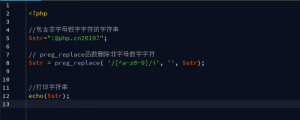在 C++ 中,const 也可以用来修饰对象,称为常对象。一旦将对象定义为常对象之后,就只能调用类的 const 成员(包括 const 成员变量和 const 成员函数)了。
定义常对象的语法和定义常量的语法类似:
const class object(params);
class const object(params);
当然你也可以定义 const 指针:
const class *p = new class(params);
class const *p = new class(params);
class为类名,object为对象名,params为实参列表,p为指针名。两种方式定义出来的对象都是常对象。
一旦将对象定义为常对象之后,不管是哪种形式,该对象就只能访问被 const 修饰的成员了(包括 const 成员变量和 const 成员函数),因为非 const 成员可能会修改对象的数据(编译器也会这样假设),C++禁止这样做。
常对象使用举例:
#include <iostream> using namespace std; class Student{ public: Student(char *name, int age, float score); public: void show(); char *getname() const; int getage() const; float getscore() const; private: char *m_name; int m_age; float m_score; }; Student::Student(char *name, int age, float score): m_name(name), m_age(age), m_score(score){ } void Student::show(){ cout<<m_name<<"的年龄是"<<m_age<<",成绩是"<<m_score<<endl; } char * Student::getname() const{ return m_name; } int Student::getage() const{ return m_age; } float Student::getscore() const{ return m_score; } int main(){ const Student stu("小明", 15, 90.6); //stu.show(); //error cout<<stu.getname()<<"的年龄是"<<stu.getage()<<",成绩是"<<stu.getscore()<<endl; const Student *pstu = new Student("李磊", 16, 80.5); //pstu -> show(); //error cout<<pstu->getname()<<"的年龄是"<<pstu->getage()<<",成绩是"<<pstu->getscore()<<endl; return 0; }
本例中,stu、pstu 分别是常对象以及常对象指针,它们都只能调用 const 成员函数。
© 版权声明
本文刊载的所有内容,包括文字、图片、音频、视频、软件、程序、以及网页版式设计等部门来源于互联网,版权均归原作者所有!本网站提供的内容服务于个人学习、研究或欣赏,以及其他非商业性或非盈利性用途,但同时应遵守著作权法及其他相关法律的规定,不得侵犯本网站及相关权利人的合法权利。
联系信息:邮箱aoxolcom@163.com或见网站底部。
联系信息:邮箱aoxolcom@163.com或见网站底部。
THE END


















请登录后发表评论
注册
社交帐号登录